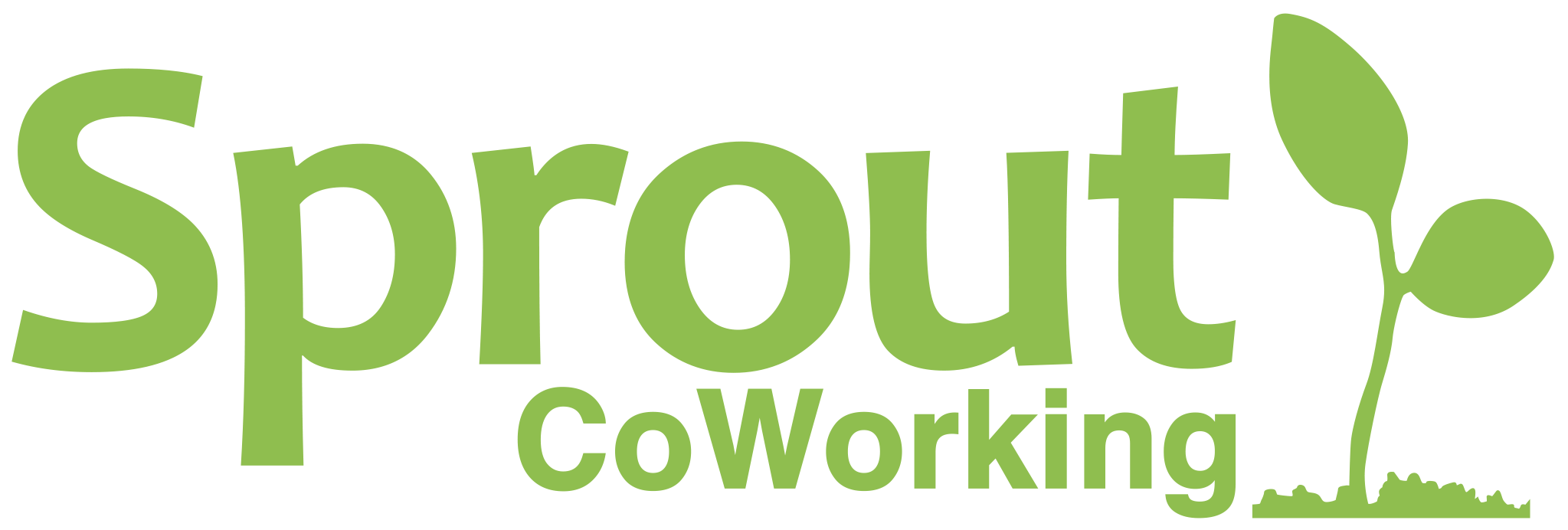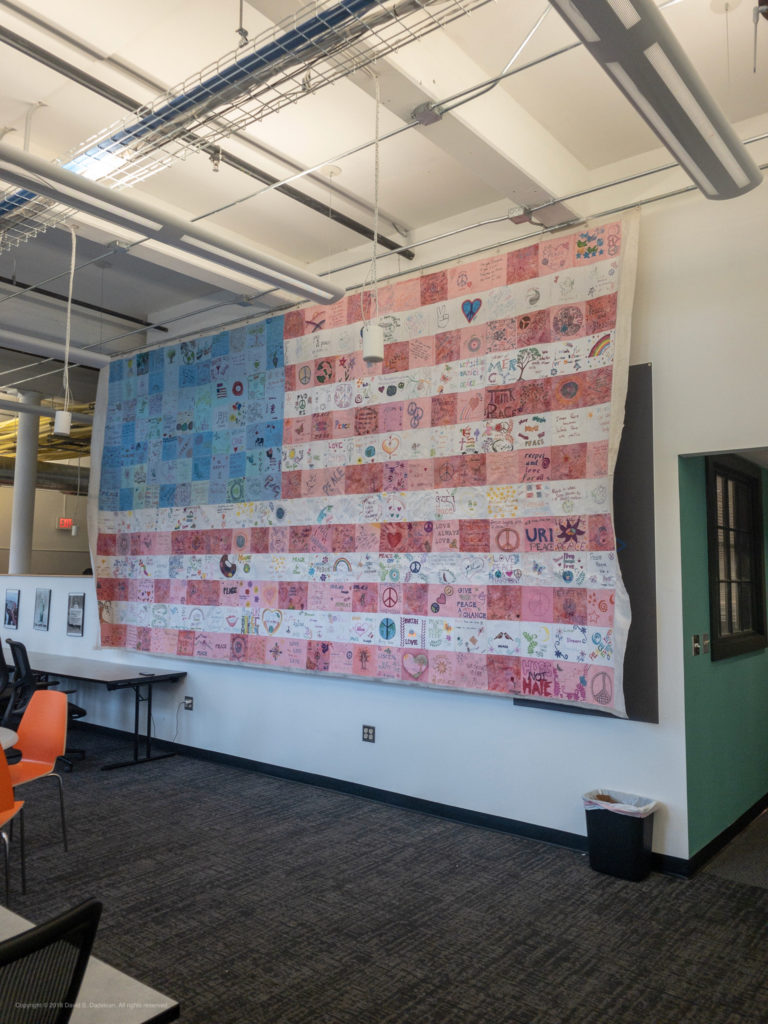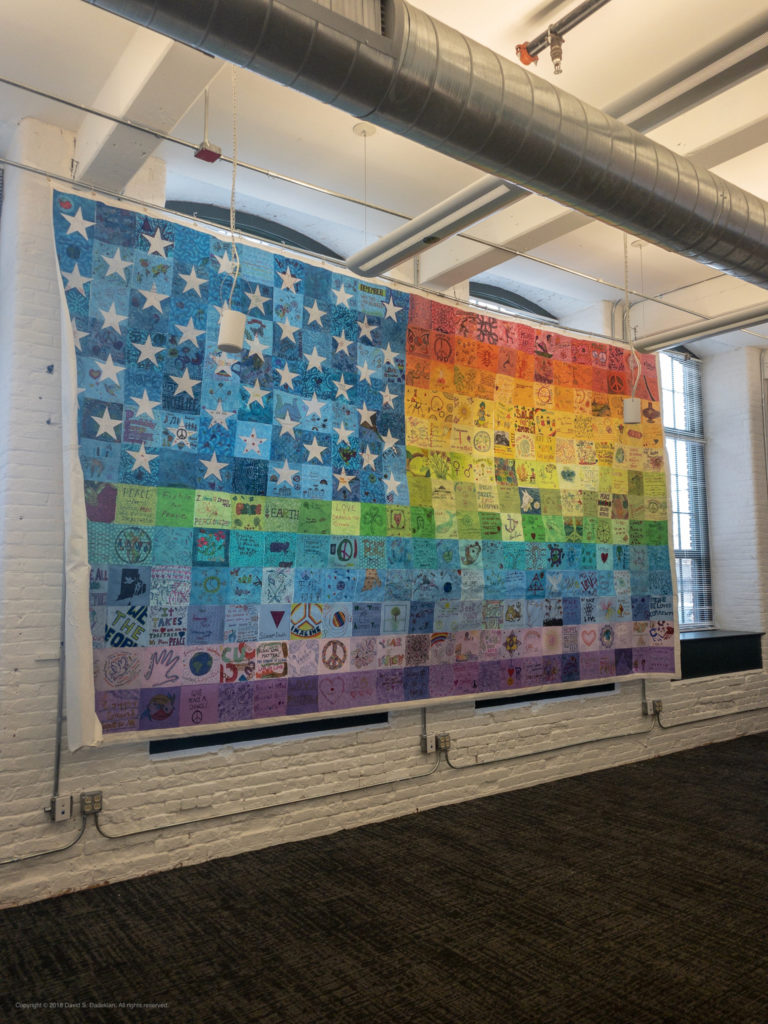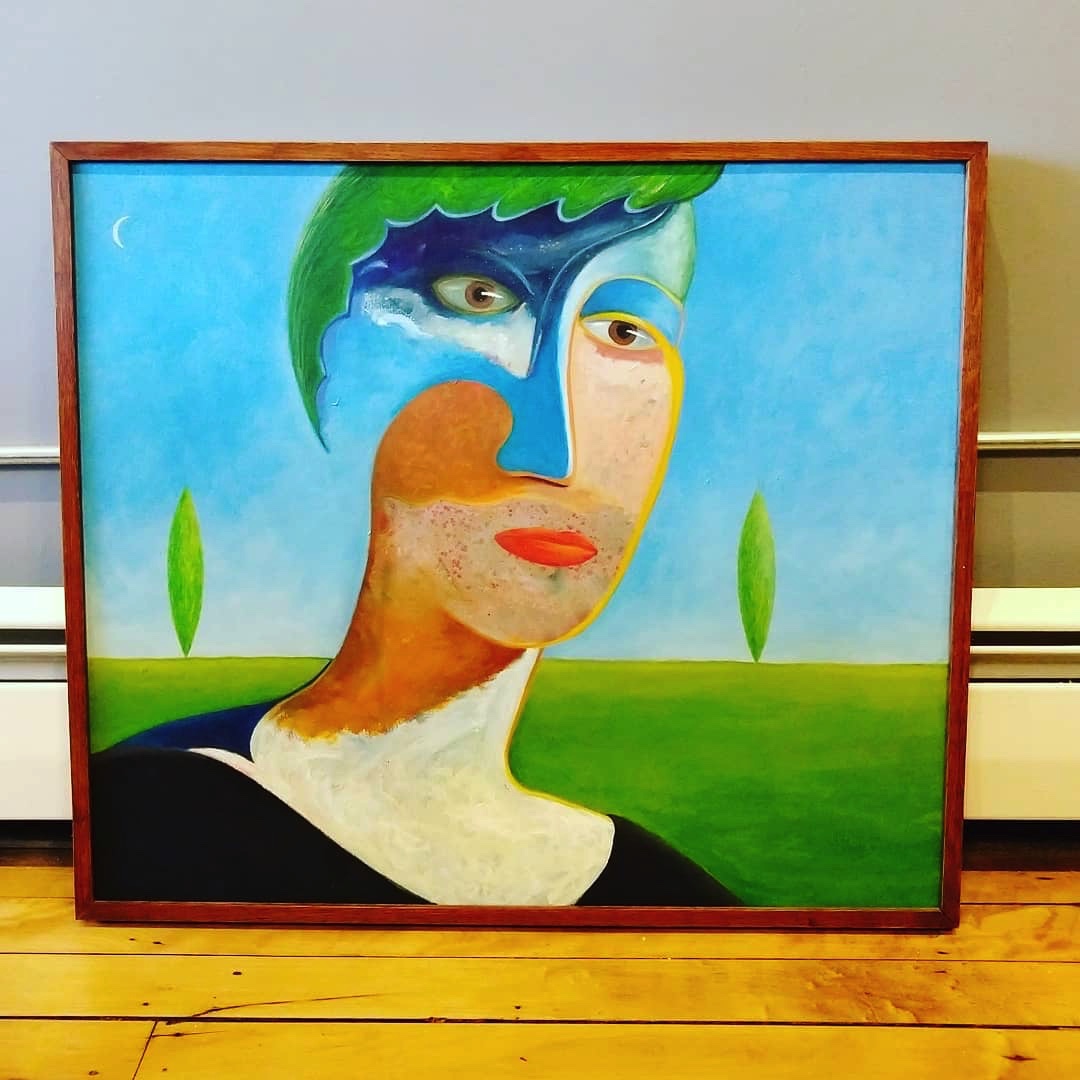Providence
The Peace Flag Project
The Peace Flag Project believes that the future of our country is in our hands. PFP’s aim is to help everyone move forward together. Executive Director Ginny Fox encourages all of us to do something every day to help make the world better. “MLK’s vision of a just, humane, egalitarian Beloved Community is our hope; the united voice of our community is our strength. One of our major goals is to make RI the first official Peace State. We can do it if we work together. Our United American Peace Flag is part of that journey.”
The Great American Peace Flag (GAPF) was the first. RI artist Cathren Housley began working with PFP in 2014. More than 300 individual Peace Flags were created to become part of a large-scale version of the American Flag. The 10′ by 20′ American flag was constructed entirely with flags of Peace. GAPF made its premiere in 2016. Since then, it has traveled the state as part of multiple concerts, festivals, graduations and exhibits.
The second large-scale project, The United American Peace Flag (UAPF), represents the cultural diversity of RI. This spectrum-theme American flag combines the work of artists, politicians, Native Americans, immigrants, direct descendants, refugees and students, from every walk of life, into a single symbol of hope for peace and a better future for all.
Sprout CoWorking is honored to display both of these flags for December and January. Please stop in and see them any weekday from 9 a.m. – 5 p.m. There will be a public gallery celebration on Dr. Martin Luther King, Jr.’s birthday, January 15th. Like Sprout CoWorking on Facebook for details.
Cathren Housley
Cathren Housley’s professional work includes children’s book illus-tration, writing, and product design as well as performance, anima-tion, and multi-media productions. She was recently awarded her 10th grant from the Rhode Island State Council on the Arts for her ongoing children’s art workshops in the RI Public Libraries. In recent years, Cathren has changed her focus from individual expression to social expression, designing and constructing commu-nity collaborative art. Cathren has contributed such public works as “The Great Serpent Mound” and the interactive Gong Oracle with its animated film, “The Art of Peace”. Joining with The Peace Flags Project at PeaceFest 2015, she began her largest work to date: “The Great American Peace Flag.” This giant reproduction of the U.S. flag features peace flags made by over 300 people from the state of RI. The finished Flag has been featured at the University of RI’s Center for Nonviolence and Peace Studies, as the back drop for the Caroline Cotter Concert to benefit the Peace Flags Project as well as a back-drop for a Peace Concert by the East Providence Chorus.. Next on the agenda: The United American Peace Flag. Look for it in 2017!
Ginny Fox
Ginny Fox founded the Peace Flag Project (PFP) in 2004, and has served as the Executive Director. In 2011, PFP became a 501C3. Ginny always says that working for peace is the work of her heart. The project which began as a personal spiritual journey has become something she has shared with thousands of people in RI and sur-rounding areas. She has studied Nonviolent Communication with Maria DeCarvalho and completed the Introduction to Nonviolence Training at the Center for Nonviolence and Peace Studies at URI. Ginny and PFP have been extensively involved with the Institute for the Study & Practice of Nonviolence and the URI Center for Non-violence and Peace Studies. She served for several years on the American Friends Service Committee’s Support Board for South-east New England.. As head of the PFP, she has worked with more than 100 organizations throughout the state and the region.
Her professional background is as an editor and writer at McGraw Hill Books and Random House in New York City. While living in New York City, Connecticut and RI, Ginny pursued photography at the School of Visual Arts, International Center for Photography, Sil-vermine Art School (CT), and with Kristin Street at Moses Brown. She has had a lifelong interest in the arts – dance, theater, and music. For Ginny, peace and the arts are intertwined.
Allison Avery Wilbur
Allison’s work is rooted in her life experiences. Her mother was a watercolor painter and her father was a cabinetmaker. She was drawn to traditional quilting for its combination of color and geometry. Layered on these influences are decades of living overseas – in Japan, Russia, Tunisia, Kuwait, Oman, and Switzerland – as well as extensive travel.
Allison combines textiles from many cultures with traditional American piecing to create work that celebrates the international language of fiber shared by women all over the world. Japanese design principles play a major part in her work.
Allison lectures on textiles and quilting technique. She and her husband, Dick Wilbur, manage “Quilts for Change” which uses art quilt exhibits to inspire social change. Her quilts have been displayed at the United Nations and in major quilt shows around the world.
Painted Treads by Suzanne Housley Noonan
Suzanne explores the transition from painting to textile with a combination of exposed and overlapping mixed medium. The movement between sewing and painting creates a balance between paint and threads. She likes to incorporate surrealism into her landscapes with unexpected color changes; blue trees or red grass.
The canvas is primed and then painted using oil paints. She prefers working with oils because the pigments blend exceptionally well. Oil paint can take up to 2 weeks to dry!
Suzanne then uses her Juki sewing machine to sew over the painted artwork with a free motion stitching technique. The paintings are loose, with overlapping lines of varying thicknesses, so it is easy to transition to sewing in the same way. She adds layers of multicolor threads over each painting. Finally, she hand stitches areas for emphasis, using heavier weight threads to create depth and texture.
Suzanne had a BFA in textile design for Rhode Island School of Design.
Her 9-5 job is creating window treatments and slipcovers for private clients.
Bonnie Schultz Platzer
After serving two years with the Peace Corps in Togo, West Africa, from 1969 to 1971, I returned to New York City to take a range of classes in spinning, dyeing and weaving, inspired by all the textiles I had seen produced in Africa. It wasn’t until I lived in Europe from 1988 to 1997 that I learned my great, great grandfather had come to Pennsylvania in 1871 from a small village in northeastern Germany that had been established to support local weavers. During the l980s, I studied Gobelin tapestry weaving techniques that enabled me to produce handwoven portraits of people I had encountered during my Peace Corps service, including Tuaregs in a market in Niger; an Algerian truck driver and his wife who welcomed me to their home for couscous after a trip across the Sahara Desert; men and women in a market in northern Togo; and a laughing Togolese child who entertained me mimicking local personalities. While living in Austria for nine years, I wove portraits of neighboring farmers. When I returned to the United States in l997, I wove portraits of Rhode Islanders, such as a little girl at the Hope Street Farmers’ Market and a grandmother tressing her grandson’s hair on the porch of her Hope Street home. After a second time serving in the Peace Corps from 2006 to 2008 in Morocco, I again wanted to capture moments shared with people I met in my rural community. Because women in some southern Moroccan villages do not want their faces represented, I chose to weave a woman with head scarf carrying a basket of animal fodder she had collected one morning. I also wove a young girl doing her homework with a TV remote by her side. If the little girl stays in school, her life’s path may be far different than the woman hauling a basket of animal food. I’m always wondering how life might change for the people in my tapestries. In recent years, I wove an Amish boy hanging clothes in an area of Pennsylvania where I grew up. I also wove the image of a man plastering a stucco wall in Matera in southern Italy. Using my photographs for inspiration, I weave portraits that I hope will raise questions for each viewer. There is a moment in each tapestry when it comes to life for me. It may take 6 months to a year to finish a tapestry but that moment when it comes to life is why I look forward to my next project.
Robin Cantrell Hogg
Furniture as art! Robin graduated from RISD in 1975 with a BFA in painting. She’s lived all over the country focusing on capturing the human figure with in a moment in time. She’s shown her work in Dallas, New Orleans, San Antonio, Fort Worth, Spokane and nor Providence. She chose to move back to Providence in 2015 because she loves how the city vibrates with creative energy.
Her new venture in painting furniture gives new life and personality to old chairs. The process makes the surface more durable and lasting, and more fun!
These chairs give new life and mood to waiting rooms, nurseries, libraries, entryways, or custom ordered to fit an existing décor. It’s a fun way to replace the expense of upholstery instead of buying new furniture.
Warren
Mark Wholey
Wholey works in painting and sculpture and has exhibited in California, Florida, Rhode Island, Florence and Padova, Italy. Awarded First Place prize from Providence Art Club, Color exhibition 2015. Second place in 2017, “America Today” theme at Imago Foundation for The Arts, Warren, RI. Granted a Sobel Memorial Scholarship and Jeffries Prize for drawing at San Francisco Art Institute. While living in Italy he worked in marble in Pietrasanta before moving to Umbria where he continued to sculpt, make furniture and restore old stone farmhouses.
Wholey has maintained a studio in Warren, RI since 2003.



